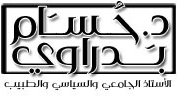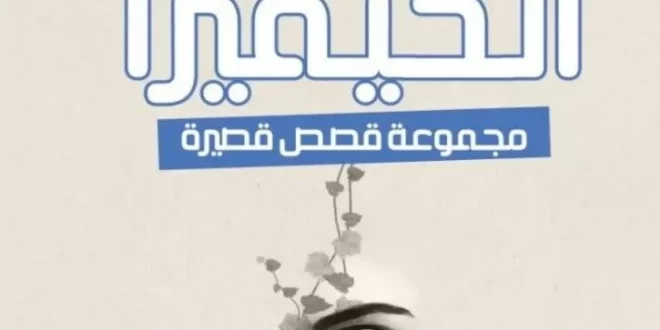Dr. Amani Fouad wrote about the book “Chimera” by Dr. Hossam Badrawy, an article in Al-Masry Al-Youm newspaper entitled “The existential-cognitive presence in the group “Chimera””
Here is the text of the article:
Dr. continues. Hossam Badrawy, his enlightening intellectual project, which he began a long time ago, with a new creative adventure, a collection of narrative and dialogue texts, in addition to his contributions to medicine, politics, his interest in the education system in Egypt, and his practice of journalistic writing.
The writer – with this collection – aims to approach the mind and heart of the reader. By utilizing people’s love for narration and stories, his messages reach – on multiple levels – to broad segments of recipients.
In his collection of short stories entitled “Chimera,” the reader can capture summaries of ideas that have remained the domain of contemplation by thinkers, scientists, and intellectuals, what we call some of man’s existential issues on Earth. In the stories, the writer represents what he has achieved in his constant research journey and his reflections on religion, politics, and education, on the system of human values. To embody ideas such as: the nature of cosmic energy, and a very broad concept of divinity, as stated in his text “Waiting for the Miracle,” the special relationship between man and his Creator, and forms of communication with God as in his stories “A Moment of Awe” and “The Expansion of Time,” his vision of the system of values, Are morals linked to religiosity and prayer, or are they a natural system in humans, acquired and educated as well, and the importance of honesty with oneself and with others?
In the texts: “The Chimera” and “Sleep is Sultan,” the writer highlights the essence of science, and how it does not conflict with a renewed enlightenment understanding of religion, an awareness that captures its essence, where the highest purposes of human law are. The writer also highlights and explains the return of man – no matter how extensive his knowledge and culture – to his awareness. The deep, linked to the inherited collective consciousness inherent in humans, in moments of fear and anxiety, despite the individual’s awareness that the collective consciousness is subject to myths, and does not rely on science to explain phenomena, and it sometimes contradicts the developments of ideas produced by human civilizations.
The writer also deals with historical views on democracy and its paths, and how different segments of people obtained it, in the stories: “Ahmed Al-Mansouri… and Socrates,” and “The Pensions Group… and Talk about Air,” and Dr.’s care remains. Badrawi holds that education is a dominant value in his interests, as he emphasizes – in his stories “Zizou” and “The Hoopoe and the Internet” – the necessity of catching up with modernist concepts, the requirements of contemporary society and its transformations. In visions related to women and their rights, my text “B.. and Darwish” embodies how male culture exploits women and does not respect their rights, regardless of their nationality.
In each story, the writer chooses a cultural and cognitive axis, which he is keen to present in the narration, such as his story “The Merger of Cultures,” which is considered one of the texts in the collection that most closely complies with the spirit of the short story, in which he talks about the French culture’s concern for beauty in all forms of human behavior, and the nature of what culture produces. He says: “How was the revolution of the poor people, and all their philosophers, who established the principles of freedom and the right of the individual before the authority of princes in palaces and kings on their thrones, in amazing French craftsmanship, to completely integrate the history of these kings into the culture of its people, in a strange mixture, This resulted in a passion for culture, science and beauty.”15
D group returns. Badrawi – with its cognitive narrative nature – poses artistic and critical questions that preoccupy researchers and writers, such as: Can the artistic writing of the short story or other literary genres lead to achievement and knowledge, such as familiarity with the history of the short story, its forms of structure, and writing techniques, and also access to the work of its most important writers? Whether the Arabs or the West?
Dr. says Badrawi in the introduction: “But I was armed with the same logic, which I ask of my students, which is that the more knowledge; Increased ability to summarize.
I think that this logic differs from the logic of creative writing. The matter here is not only subject to knowledge – despite its importance – but is related to talent and the innate part, to capturing humanity in life, the poetics and intensity of the approach, to the ability to invent diverse plastic structures, realistic or imaginative, to form exquisite metaphorical styles, to combine artistic levels, in special ways, to decode… The code of life in an indirect, human way.
Art and writing have other components, components that begin with the fact that art itself jumped on the rules and on the common; By capturing the very human, creating wonder, not just knowledge; Rather, it is knowledge fused with feelings and events, and mixed with them. Art offers you pleasure that addresses a special area in the human being. An in-between area, between the mind and the heart.
The structure of the short story is often based on very tense human moments, unusual moments, and the paradoxes they contain, and the narrative in it seeps from the writer into the reader’s pores and soul effortlessly, without feeling like an educational reformist discourse that presents his theories about life and dialogues with his interpretations of some issues. Which societies are concerned with.
The artistic techniques used by Dr. Badrawi in writing the narrative text, where his story “Merger of Cultures” is based on the structure of illusion, throughout the narrative. Where the writer deludes his recipient that he is telling about a woman, and describes a scene of seduction, using all the human senses, and the colors and circumstances surrounding the scene of meeting and dating, so that the story ends with the irony that the seduction was only from a piece of gateau, and she had all this resistance, and then surrendering, the writer humanized the piece of gateau, and attributed It shows the characteristics of humans, through the description of the scene, and the dialogue with himself and the French ambassador.
He says: “At the table, and there were many around her, but she was the one who was looking at him with this look, even though she came late.. He turned away from her, so that his eyes would not meet her.. He tried in every way – out of respect for himself – not to look at her, and he opened side conversations about Self-control. The French ambassador turned and seemed hesitant to say to him: Why are you avoiding her like this? There is no problem in French culture with your getting along at first sight. 14.
The writer also speaks about the hoopoe in the text “The Hoopoe and the Internet.” To monitor the transformations of nature around us and around creatures, and show the effects of technology on the environment, and the noise of the Internet, which has become a vast network, covering the earth and the sky.
The structure of his story “On the Arab Spring Café” is based on sarcastic symbols, as the café offers its customers nothing but the drink of tyrants and the drink of preachers, despite the diseases of slavery, humiliation and backwardness that result from them. This café does not offer the drink of equality or justice, and every Arab country has a drink specific to its situation. Coinciding with the Arab Spring.
Drinking in this café is forced, and the situation is reversed. He says: “My son, I am the customer and you are my servant.” 19 In this story, the writer exposes some political misconceptions in our countries.
We can also describe the text “Waiting for the Miracle” as a philosophical, scientific, anthropological story. Dr. Alaa Alwani is scientifically minded and does not believe in miracles, as the real miracle is the creation of the universe, man, and all beings in an order, and God will not pamper himself by violating his order, and Dr. explains. Alaa touched us with emotional stances by saying: “The truth of the matter is that the collective thought of human beings, through the accumulation of thousands of years, influences the subconscious mind, and makes the idea of God’s intervention in the particles of life exist, despite its exclusion from the outward mind” 24, 25.
In the longest texts in the collection: “Chimera” flows through a social-scientific narrative, monitoring a rare phenomenon, where Laila – the daughter of the bright-eyed engineer – discovers that she is two months pregnant, despite her husband’s absence for more than three months. Thus, family discussions begin about the necessity of aborting the pregnancy, despite their confidence in Laila and Hassan’s morals. Her behavior, but their fear of the husband, and the sayings of society; It makes them decide that it is necessary to abort the fetus, without the knowledge of Laila’s husband. Laila refuses, and chooses to be frank with her husband, but she is aborted without outside intervention, so that – with time – a rare phenomenon is revealed, called “chimera”, which is that a woman becomes pregnant from herself and her cells, in this story. The writer presents the pressure of society’s authority on determining the lives of people, and some sayings inherited from religious scholars that must be reviewed with contemporary scientific developments. The writer also emphasizes the advancement of individual morals, regardless of prayer or fear of punishment.
The narrative space opens up in relation to the techniques of time and space in most of the collection’s stories. It deals with a summary of philosophical, religious, political, social, educational ideas, so there are no temporal or spatial specificities required, but of course we feel its modernity, and its location in our geographical surroundings.
The reader of the collection may come to mind to determine the distance between the characters of the stories in the “Chimera” collection and the character of Dr. Badrawi, and I think that most of the characters in the stories have acquired some of the intellectual features of the writer, and so the question may be crystallized in another way: What distance should there be between the writer’s personality and the characters of his texts? Doesn’t the multiplicity of characters in the work remain just variations on one theme, and not unique characters with their different needs and visions in each narrative text?
Most of the Chimera stories are didactic, cognitive stories, in keeping with what we call cognitive or informational narrative, so the language tends to be declarative; The goal is to deliver clear intellectual content.
 Dr. Hossam Badrawi Official Website
Dr. Hossam Badrawi Official Website


